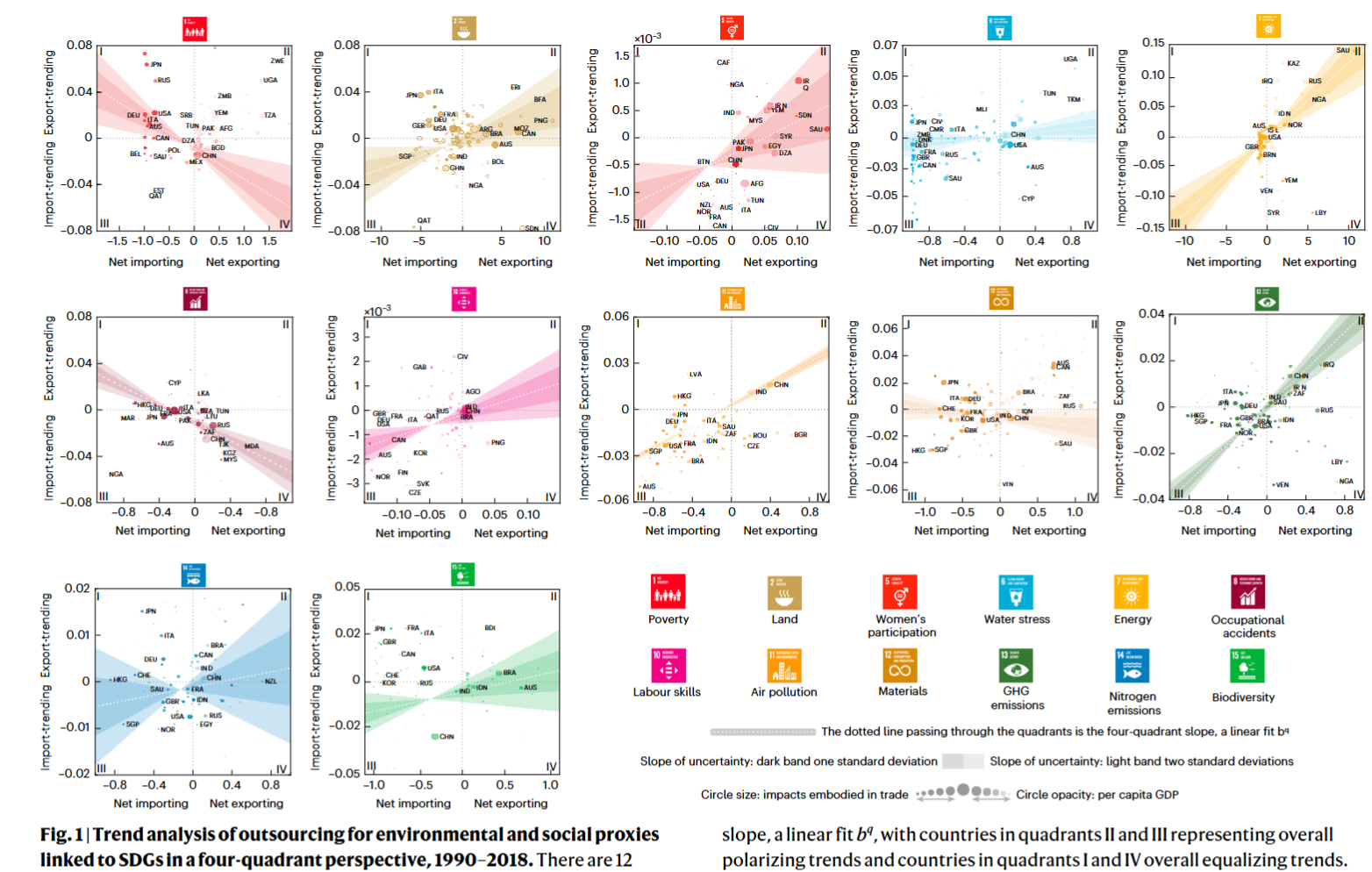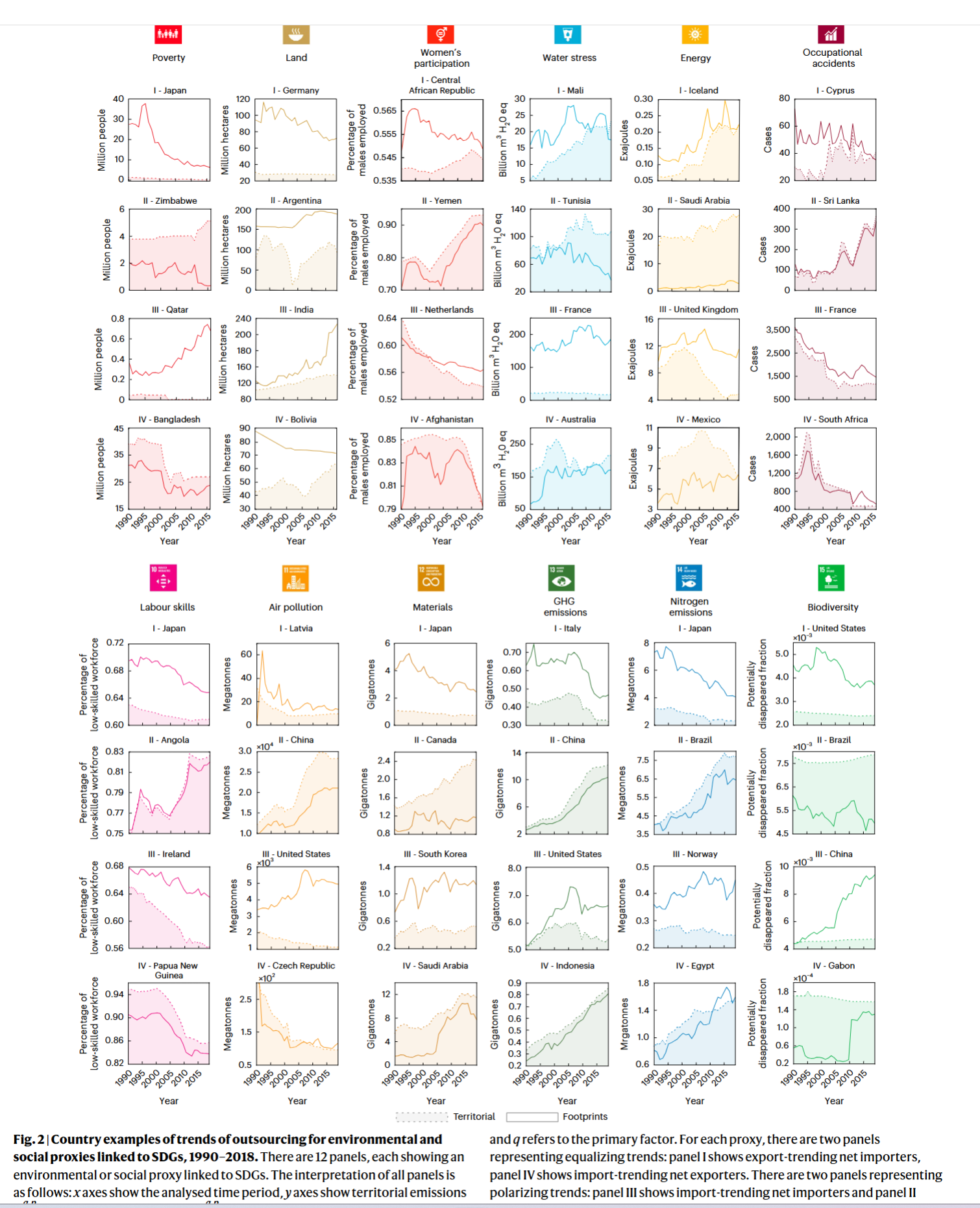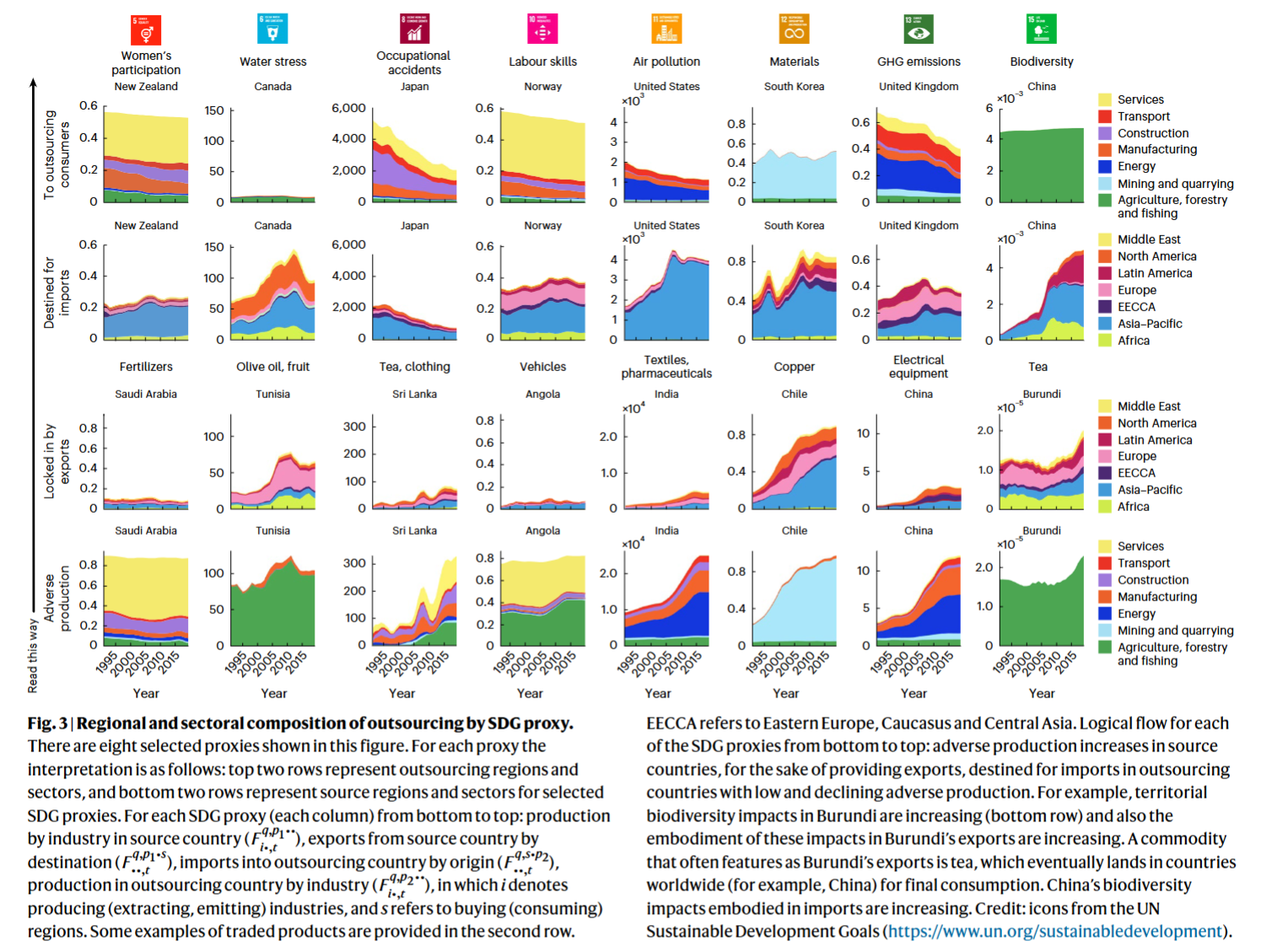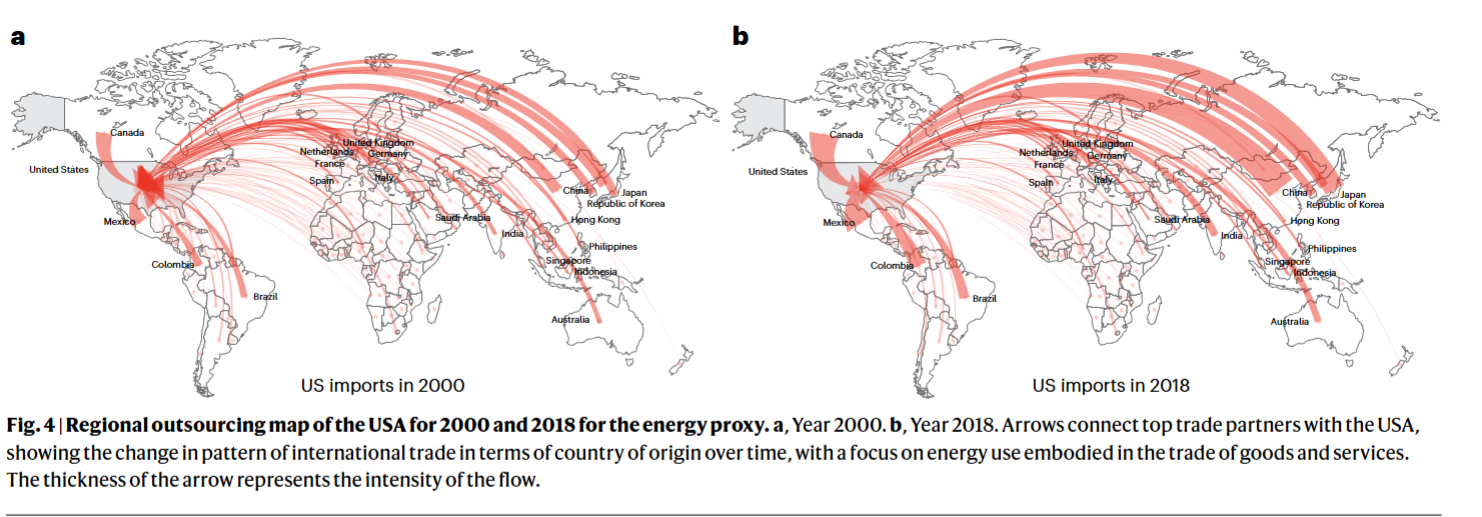Objective:
- Assess selected SDGs at a global level over three decased to assess the influence of international trade on SDG progress in terms of polarizing and equalizing trends
Case:
Methodology:
Data Source
- GHG emission: EDGAR
- Land use: FAOSTAT
- Biodiversity: Life cycle impact assessment indicator
- Energy: IEA
- Materials: UN international resource panel global material flow database
- Water stress: SCP-HAT
- Nitrogen emission: FAOSTAT
- Employment and skills: international labour organization
- Income: Gloria
- MRIO(GLORIA)
Findings:
- Energy resources are increasingly oursourced

- Almost all high-income countries are increasingly importers of commodities embodying air pollutants and GHG emissions

- A balanced trend across polarizing and equalizing effects of material use

- Land use and biodiversity demonstrate polarizing trends; nitrogen emissions have increased over time


Coding Reference:





